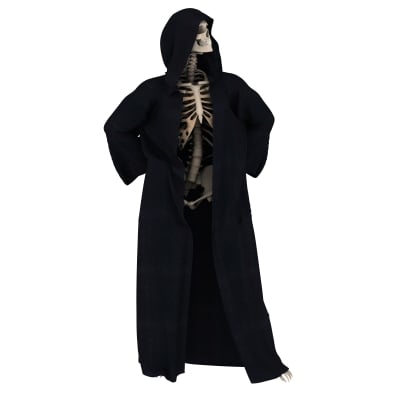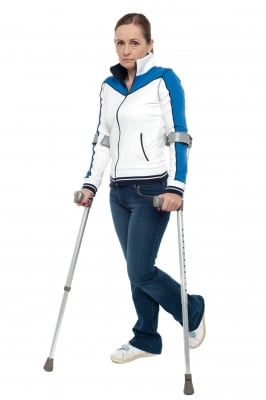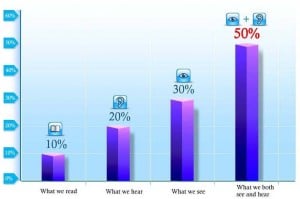
One of the interesting things I find when it comes to safety is that some safety professionals (some, not all) like to play bad cop when it comes to getting their...
 A while ago, I connected with an old friend and when I mentioned I was writing a book on safety communication, he laughed and told me how clumsy he was and how he hurt himself all the time.
A while ago, I connected with an old friend and when I mentioned I was writing a book on safety communication, he laughed and told me how clumsy he was and how he hurt himself all the time.
He reminded me of a person I used to work with who was so unsafe, it was scary (an ex-electrician who liked to pull out the power plug of equipment half out, so that it was dangling in the socket with the connectors exposed). He was also constanly injuring himself.
Interestingly, both these men are of quite a negative disposition. While cheery on the outside, all you have to do is read their Facebook comments and see a constant theme of relationship issues, health issues and just general complaints about life. Fear permeates their existence.
According to a 2006 WHO Collaborative Centre French Study, around 27% of workers are more likely to experience more injuries than the average person.
So what makes some people more accident prone?
In the book, The Divine Matrix, Gregg Braden, a former computer systems designer discusses that there are three main fears that hold us back subconsciously in life.
The one that interests me from a safety perspective is the universal fear of surrender and trust.
Being able to surrender and trust is when you allow youself to let go of your individual self and the beliefs about who you are, knowing that by doing so that you can exchange yourself for the greater possibility of who you may become.
Universally, most of us feel within that it's not safe to do so. That we can't trust other people. After all, you just have to turn on the nightly news and see so much death and assaults that you question the safety of the world we live in. How can we surrender ourselves to life, when it looks like it won't support us?
Essentially, our sense of safety comes from the security we feel inside ourselves. To experience this, we must trust that the world is safe.
Yet, this is so hard for many of us to do.
According to Maslow’s Hierarchy of Needs, once our physical needs are taken care of (food, water, shelter), what takes precedence is our desire to be safe.
This means we are programmed to want freedom from fear, pain and danger. We want to work in safe workplaces where we can’t get hurt. We also want to make sure our loved ones are protected.
But we need to see and feel evidence that our workplaces are safe and that our fellow co-workers are looking out for us.
In the Workplace Culture Model for High Performing Companies, I recommend that there are three areas business leaders need to balance for a safe workplace: Unity, Compassionate Leadership and Communication.
 Once these three inter-related factors are working in unison, you hit trust, the sweet spot. This is when people feel safe at work.
Once these three inter-related factors are working in unison, you hit trust, the sweet spot. This is when people feel safe at work.
Workers look to senior leaders to see that safety is a priority and that they are safe from harm. They get this from clear communication that is transparent, authentic and has no trace of hypocrisy. They see it from a unified workplace where people work together and look out for each other. And they feel it from compassionate leaders who care about them. This in turn enables workers to feel safe to excel and take risks in their career, knowing they are protected from getting injured at work or from being bullied or harassed by colleagues (you can read more about improving your safety culture in this free report: Workplace Safety Culture).
Psychologists will tell you that our inner beliefs affect what we experience in the outer world. If you are scared of life and don't feel safe, you will be most likely to experience situations were you get hurt (either physically or emotionally).
And while we can often see frightening things around us that appear part of our reality, the key to removing our fears is believing that they don't have to be part of our reality. This isn't a New Age belief, it's now backed up by science (quantum physics).
The good news is that all that is required to help men and women who fear being able to surrender and trust, is for them to be able to see that pattern within themsleves. Just a small change in how we see ourselves can then help us make changes to our habits that can positively change our health, careers and even relationships.
These are known as keystone habits, which Charles Duhigg mentions in The Power of Habit. He claims that some habits are more important than others because they have the power to start a chain reaction, shifting other patterns as they move through our lives. Keystone habits influence how we work, eat, play, live, spend, and communicate. They start a process that, over time, transforms everything, so that when people start changing their habits, they start changing other unrelated patterns in their lives, often unwittingly.
Often, those who have a fear of being able to surrender and trust end up with relationship and health issues because of their fear of trust and feeling safe.
As Greg Braden says in The Divine Matrix, we have to break the cycle of our thinking. Of course, changing how we see ourselves is a life's work and it's hard. We all struggle with who we believe we are.
If you're a business leader and you know you have certain staff that hurt themselves a lot, you can help support your workers who essentially have a fear of safety by:
Remember, our outer world mirrors our inner world. By providing a safe workplace environment and counselling that helps the perpetually injured understand themselves better, you will create a safer, happier workplace. All they need is awarrness and acceptance of what they are doing subconsciously and they will start to become less accident prone.
Do you know anyone who is accident prone?
Photo credit: By Stockimages at Freedigitalphotos.net

One of the interesting things I find when it comes to safety is that some safety professionals (some, not all) like to play bad cop when it comes to getting their...

We all remember as kids having to stand up in front of the classroom and do a "Show and Tell" session to the class about our newest toy.